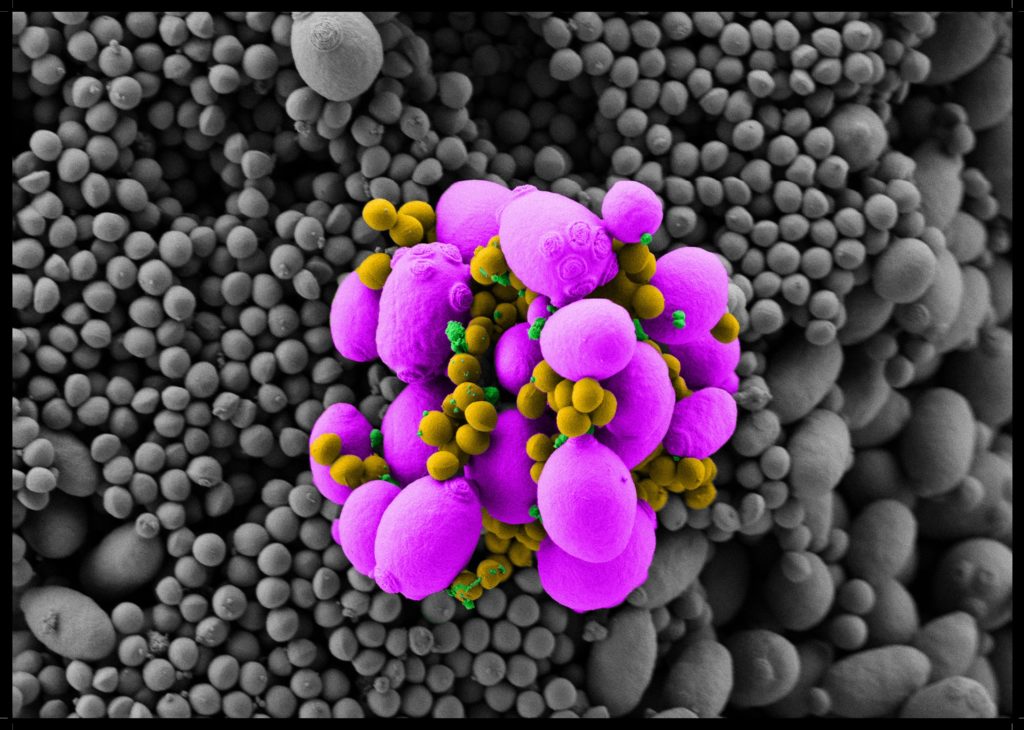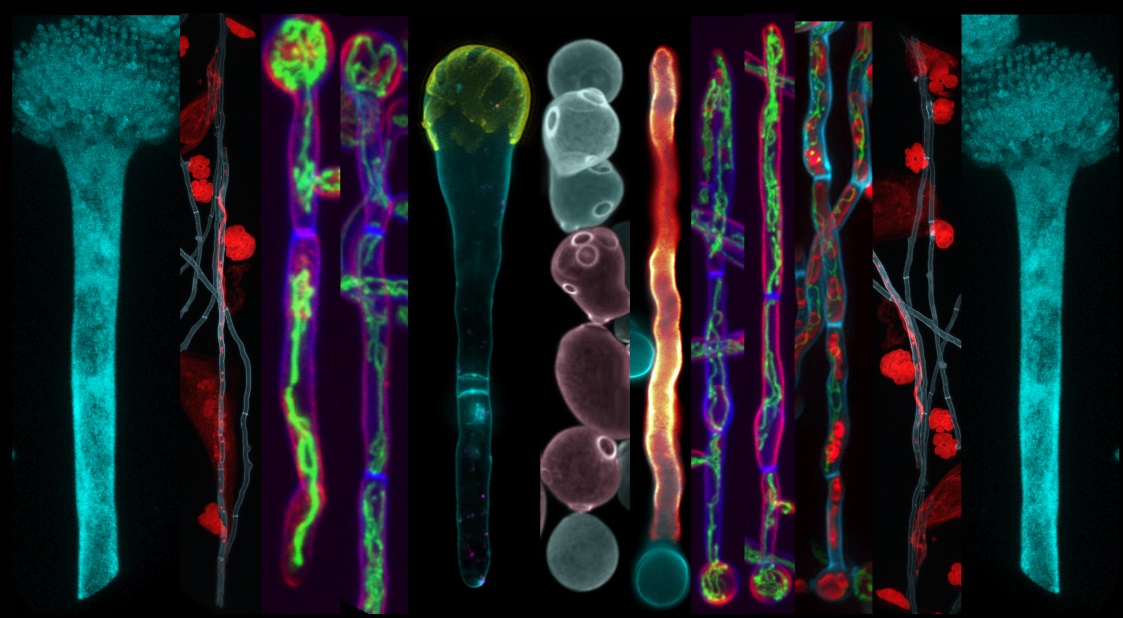Candida albicans biofilm (blue) formed from a population of Goliath cells (yellow), visualised in 3D. Image credit: Dr Iana Kalinina, Wilson Lab, University of Exeter
Discover the microscopic world of killer fungi through striking images taken by world-leading scientists at the University of Exeter’s MRC Centre for Medical Mycology (MRC CMM). The Centre specialises in ground-breaking research to diagnose and treat potentially deadly fungal infections. The display will feature 8 stunning microscopy images taken by researchers at the MRC CMM.

Using state-of-the-art microscopy techniques developed within the MRC CMM, scientists at the Centre are able to unlock the secret lives of deadly fungal pathogens, driving ground-breaking discoveries that will lead to new treatments. The display will also feature works from the MRC CMM’s previous collaborations with artists across various disciplines, including images of sculpture, photography, illustration and stills from performance.
Fungal infections kill over 1.5 million people annually but remain critically understudied. Despite the high fatality rates and widespread ill-health that fungal diseases cause, their impact is not widely appreciated. We need better diagnostics, safer and more effective antifungal drugs, and a clearer understanding of how fungi infect our bodies and evade our immune systems.
Professor Adilia Warris, Co-Director of the MRC Centre for Medical Mycology, said “The images on display have the power to reveal targets to improve the diagnosis and treatment of fungal infections. By showcasing these colourful and multidimensional fungal images, we hope to capture the attention and increase awareness for these fascinating but feared fungi.”
Located on the ground floor of the Queen’s Building, Streatham campus, this new display space is curated by the University’s Arts and Culture team. Launched in September 2021, it provides a space to visually showcase transdisciplinary and interdisciplinary research projects, creative collaborations between staff, students and artists, and collections held at the University of Exeter.
Naome Glanville, Arts and Culture Co-Ordinator said, “Arts and Culture is delighted to be able to showcase this stunning display of beautiful large-scale images of microscopic organisms, made possible through cutting-edge imaging technologies used by the researchers at the University of Exeter’s MRC Centre for Medical Mycology, and to highlight the work of creative practitioners with whom the Centre has collaborated.”
You can view ‘The Hidden World of Killer Fungi’ on the ground floor, West Wing foyer of the Queen’s Building on Streatham campus throughout term 2 (9th January – 29th March 2024). Find out more about previous Queen’s Building displays here.
Fungal infections cause more than 1.5 million deaths worldwide each year. Philanthropic donations are vitally important to progressing our research at speed, enabling Exeter’s MRC Centre for Medical Mycology team of leading scientists to drive forward innovation and make advancements to health and patient care. To make a gift, please donate here, or for further information please contact Katie Burfitt at K.Burfitt@exeter.ac.uk.

